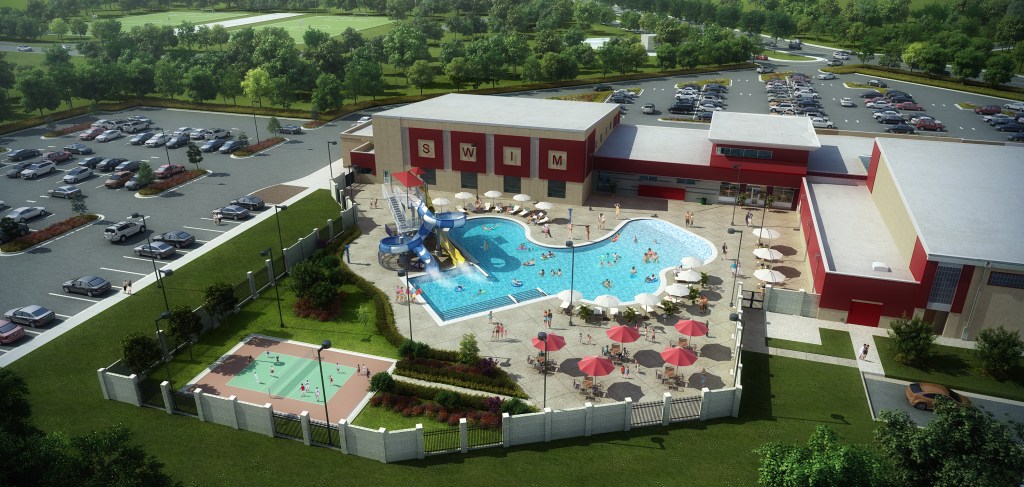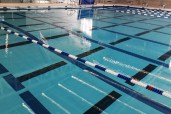Something pretty amazing will happen when the new $10 million aquatics facility opens this summer in Roswell, N.M. — yes that Roswell. Along with sporting new outdoor leisure and indoor lap pools, the Roswell Recreation and Aquatics Centers’ various systems will be able to talk to each other.
That’s courtesy of the latest advances in pool automation, not any kind of alien technology. In fact, even with a more complex set up that includes play features, two different waterslides, and a heated, 8-lane competitive pool, Roswell’s nearly 9,000 square-foot aquatic facility will be able to partially maintain itself for more fluid operations, better efficiency — and cost savings.
For example, rather than Roswell’s pool operators manually turning on the UV and HVAC systems, the integrated automation system can check chloramine levels and turn on those energy-intensive systems only as needed. “So, we make the pool optimal for swimmers without wasting money,” says Kevin Post, principal and studio director for Counsilman-Hunsaker, which designed the Roswell pool.
Post says that kind of smart pool management is made possible with a new generation of chemical controller that acts as an automation communications hub that can control key equipment such as the Roswell facility’s Pentair Commercial Aquatics Acu Drive XS variable frequency drive and Aurora Series pumps.
“When clients ask about what’s possible with automation, the short answer is that everything can be integrated through a chemical controller,” Post says. “When these systems can talk to each other it’s a game changer.”
Why?
First off, as illustrated, Roswell operators will only have to use one system to control all their major equipment — VFDs, heaters (on the indoor pool), pumps, UV systems, and HVAC. Even the Pentair Intellibrite 5g White LED pool lights can be remotely controlled and scheduled. At facilities with some automation, this equipment must be controlled and monitored separately without a central hub. “It makes it easier to have one system that you have to be familiar with,” Post says. “It maximizes efficiency.”
Next, because the hub allows equipment to communicate, or integrate, that information can be used to manage Roswell’s facility on a whole new level. Take backwashing. Normally, it’s a laborious, step-by-step process that requires shutting down heaters, UV systems, pumps and determining a down period for the process to complete. But with integrated equipment, Roswell operators can automate all of those steps into a single command and schedule it as needed. “Once it’s set up, one button does everything for you,” Post says.
And since these systems are integrated, they’ll also share data. Roswell’s operators can use that shared data to more proactively troubleshoot problems before they become serious issues. “As aquatics facilities become more complex, more equipment needs to be tied into the system,” Post says. “The more information the system can get, the better it can do.”
While the Roswell facility’s use of automation integration is out of this world, surprisingly, Post estimates that less than 10% of aquatic facilities are taking full advantage of it. Instead, most facilities have bits and pieces of automated equipment that require separate inputs to monitor and control them.
The reason? Post says many operators see these types of systems as more “nice to have” than “need to have.” And in an environment of tight budgets, many assume they can’t afford to fully automate. That’s too bad, because as the Roswell facility demonstrates, getting systems to integrate may be easier than many operators think — and as water and air quality become a vital aspect of risk management, having that kind of smart management is more important than ever, Post says.
“There’s not a huge cost at that point because they already have the systems,” he says. “It’s just making sure they talk to each other. …If you want to do everything possible for the end user, but not waste money, this is how you get there.”
For more on automation go to www.pentair.com.
Acu Drive XS, Aurora and IntelliBrite are registered trademarks of Pentair plc.

